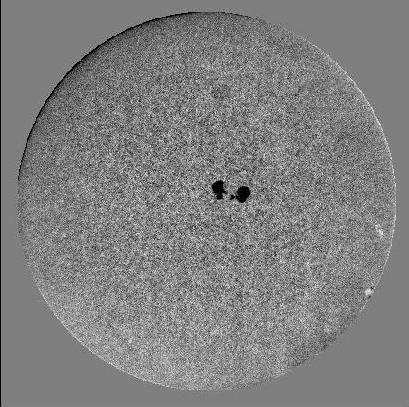
|
Credit & Copyright: Big Bear Observatory,
Caltech
Explanation:
The Sun's
surface is not smooth. It has thousands of bumps called granules
and usually a few dark depressions called sunspots. Each of the
numerous granules is the size of an Earth
continent, but much shorter lived. A granule
can only be expected to last a few minutes before dissipating
and being replaced by a newly rising granule. In this way a granule
acts much like a rising
bubble in boiling water.
The above black and white,
visible-light picture
is quite unusual because the usual relative darkening visible
near the edges of the Solar disk
have been digitally removed. Visible near the center are two
large sunspots
while the computer enhancement brings out two bright plages
close to the right solar limb.
|
January February March April May June July August September October November December |
| ||||||||||||||||||||||||||||||||||||||||||||||||
NASA Web Site Statements, Warnings, and Disclaimers
NASA Official: Jay Norris. Specific rights apply.
A service of: LHEA at NASA / GSFC
& Michigan Tech. U.
Based on Astronomy Picture
Of the Day
Publications with keywords: Sun
Publications with words: Sun
See also:
- APOD: 2024 September 2 Á A Triangular Prominence Hovers Over the Sun
- APOD: 2024 August 18 Á A Solar Prominence Eruption from SDO
- APOD: 2024 August 4 Á Gaia: Here Comes the Sun
- APOD: 2024 July 28 Á Sun Dance
- Prominences and Filaments on the Active Sun
- APOD: 2024 May 28 Á Solar X Flare as Famous Active Region Returns
- APOD: 2024 May 26 Á A Solar Filament Erupts
